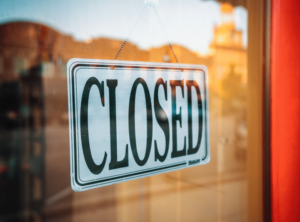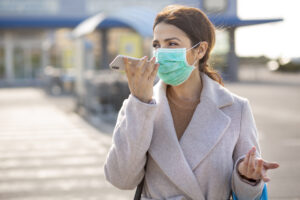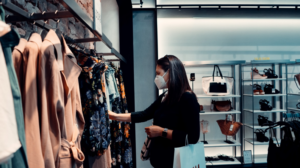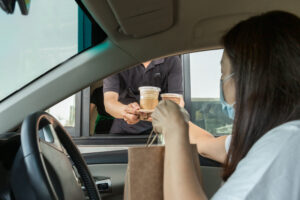
We live in a “Pandemic World”, where several countries are studying the reopening of businesses to reduce the financial impact on economies.
We live in a “pandemic world” and, at the moment, several countries are studying the reopening of trade to reduce the financial impact on economies. Many of them have already reopened and closed again, with the emergence of the “second wave” of the new coronavirus. In Brazil, this reopening is already taking place, even though it is considered by some to be unsafe, given that the numbers of contagion and mortality have remained at a high stability, and by others it is considered necessary, since several sectors have been greatly affected. with the compulsory closing or with the imposition of the reduction of its activities for many months.
In addition, the crisis is exacerbated by the way in which the government handles it. That is, it will not end up like magic in the post-pandemic. The world will definitely not be the same after Covid-19. Many companies here in Brazil desperately hoped to reactivate their businesses after this reopening, and a large percentage of these entrepreneurs believed that the simple fact of reopening trade was enough to put the company back on track. The probability of this happening, however, is minimal, due to ignorance or for underestimating the statistics, just as many people underestimated, from the beginning, the need for isolation.
Unfortunately, the chances of frustration for these entrepreneurs are great, but all is not lost. With a change in mindset and digital transformation, it is possible to move forward. Understand, in this article, how businesses have been and will continue to be impacted by the new coronavirus, even in the post-pandemic, and what you can do to adapt to the “new normal”.
Effects of the pandemic on Brazilian trade

In the first few months of the pandemic, the retail trade workforce was hit hard. Unemployment increased by 46% in the sector, according to data for the month of April. The industry perspective was that most stores would go out of business, as there was no concrete prediction of when storekeepers could effectively reopen and return to sales. Even with the reopening of part of the trade, the massive return of consumers depends on the fact that they feel safe and that the epidemic is under control in the country, something that, judging by the evolution of the numbers so far, will hardly happen before 2021.
We know that the restaurant and delivery sector in our country basically has the following composition: 10% are large chains, which have cash to go through the crisis, digitize their businesses and implement reopening protocols and 90% of the sector is made up of small businesses , who reported having cash flow for a maximum of four months (accounted for as of March), with the most likely being that a “full” reopening will only happen next year.
Another worrying factor is that a considerable percentage of these small entrepreneurs do not have the mindset to make the digital transformation, and should prioritize this transition while they still have cash and, above all, time. With the cashier zero at the end of this pandemic period, they will no longer have this option. In the face of all this, it is necessary to understand that the economy does not work by force. It is anchored in behavioral foundations. Both investors and consumers move from expectations and are sensitive to factors such as risk and lack of predictability. In other words, a collective call is not enough to get market agents to operate again in the same parameters as before the pandemic. It’s a behavioral issue.
Changes in consumer mindset

The world stopped to work differently again. Behaviors have been reset. Digital transformation is no longer a simple discussion about the future. It is present in our routines, affecting companies and society, provoking new business models. This is the challenge for companies and their managers: to imagine the future and make decisions today.
This crisis has been defined by some researchers as a reset, a breaking point, a kind of watershed capable of provoking profound changes in people’s behavior. “A crisis like this can change values,” Pete Lunn, coordinator of the behavioral research unit at Trinity College Dublin, told Newsday. The “new normal” is essentially being composed of new habits and new behaviors. Retail, industry and services will suffer the consequences of consumer mindreset that, in a short space of time, had a behavioral shock unprecedented in human history.
The quarantine made us rethink, redesign habits and reevaluate needs. Many consumers have discovered that they no longer need everything they used to buy. According to the Copenhagen Institute for Futures Studies, the idea of “less is more” will guide consumers going forward. And the reason is not just financial, people are going to review their relationship with consumption to reinforce a movement that was already happening even before the pandemic: consuming for the sake of consuming is out of fashion. We “pivot” our core values. And we are redesigning our behaviors in record time!
The technology and digital solutions that were already altering our daily lives gained even more strength. Apps, digital networks, delivery, share economy, artificial intelligence (AI), virtual reality and even augmented reality have become crucial for the development of humanity. Our mindset will start to incorporate distancing, safety and protection precautions, in addition to new habits and values, for a long time. Maybe forever.
Redesign of business models

Crowded shopping mall, cinema with lines of people eager to watch the release of the “movie of the year” in seats with a distance of 5 cm; that concert by your favorite band in the crowd; aircraft seats glued to each other, after a long check-in queue at airports are some of the common situations that we lived very recently. Can you imagine living it today? Can you think about what Broadway shows, cruise ships, public transportation systems will look like? These are, after all, business models with a profit based on the capacity of their spaces.
As the agglomeration is the main vector of proliferation of the virus around the world, certainly all these businesses will have to be redesigned. Some sectors will likely be unfeasible if not reset. For the simple fact that for the investor “the account will not close”.
Let’s take movie theaters as an example, with the segment’s standard cost structure. How big will the demand drop? We don `t know yet. How much was lost in this market in 2020? It is possible that today’s movie theaters can be compared to the physical media movie stores of the past, which became extinct some time ago. Some have become “strategic monkeys” like Blockbuster, have lost their grip on streaming like Netflix, Prime, Holu, Apple TV, among many other players. Or will theaters have to reconfigure their spaces and increase their tickets to compensate for the drop in demand?
The movie industry itself will be able to pivot its business model and become 100% streaming, in fact, a path that was already underway. That is, perhaps the new consumer prefers to watch the release of the movie of the year in the comfort of their home and, probably, spending less and avoiding risks. Even if these risks remain only in the memory, as a kind of psychological trauma that causes fear and discomfort. And not necessarily the producers will lose with it. On the contrary. Perhaps it is even more profitable to eliminate some processes from the chain.
An example of this is in the book The Strategy of the Blue Ocean (a very current strategy reading for this moment, by the way), in which one of the main cases is that of Cirque du Soleil, which eliminated processes such as animals in the shows, considered until then as a fundamental piece in the circus segment, promoting the breaking of old paradigms. There are experts who bet on the growth of Direct to Consumer (D2C). After all, many brands that until then had intermediaries to reach the consumer, now sell directly through digital media.
Post-pandemic unpredictability

The new coronavirus is sending us back to chaos theory. In this case, a butterfly took flight in China and the situation was as theory predicts: unpredictable. Theory is present in everything around us and is the basis of the butterfly effect.
The central idea of chaos theory is that the slightest change at the beginning of any and apparently insignificant event triggers uncontrollable variables and consequences of enormous proportions and absolutely unknown in the future. Therefore, such events would be virtually unpredictable and chaotic. It sounds scary, but it only takes a look at the more casual phenomena in life to see that this idea makes perfect sense.
An isolated event can take on gigantic proportions, such as, for example, the racist act that culminated in the death of George Floyd, in May 2020, and triggered the Black Lives Matter movement, taking thousands of Americans to the streets in at least 140 American cities. Some post-pandemic unpredictability already takes over our daily lives.
Many supermarkets in Brazil lack items such as biological yeast and wheat flour. Some more sophisticated products, from premium brands, disappeared from the shelves and were replaced by more popular similar products, some of the same manufacturers. We can still see more absences, because companies are finishing processing their inventories and the replacement of some inputs is uncertain, the production and logistics chain is being redesigned not only in Brazil, but also in countries in Europe and North America.
In the American market, for example, sales of yeast increased by 350% according to a survey by Nielsen. Consequently, the supply has been greatly reduced. The main reason is that consumers are using their time at home to learn new skills, such as baking and cooking, adopting the familiar DIY (Do it yourself). By “playing” bakery at home, we generated a phenomenon that impacts the entire chain.
Trends for the new normal

Who among us, at the beginning of 2020, could imagine all the people at home, deserted streets, practically empty airports, closed malls, with no prediction of a safe and definitive return? The pandemic spread exponentially and we had to learn to live with this factor in a painful way. Only the writers of fictional films like “Epidemic” have traced something similar to what we live.
The transformations we will see in the post-Covid-19 world are already among us. The uncontrollable variables involved are so many that we have difficulty in designing the future. But in the midst of so many uncertainties, we can identify some signs of certainty:
1. Companies that do not digitize in the post-Covid-19 world will disappear
Several international futurists say that the pandemic acted as an accelerator, anticipating changes that were already underway, such as remote work, distance education, the search for sustainability and the demand by society for companies to be more responsible from the point from a social and environmental point of view.
Experts say we accelerated by five months the equivalent of five years compared to pre-Covid-19. In other words, the crisis boosted the digitalization process in Brazil and made the Brazilian consumer start performing online activities unimaginable before the pandemic.
Research carried out by McKinsey & Company pointed out that 40% of Brazilians are making more purchases online during the quarantine and that the same percentage, 40%, intend to continue with the post-Covid-19 practice. The elderly, classified as risk groups, also started to buy online, which represented, for many, a “forceps” learning experience. The same survey shows that 35% of Brazilians intend to reduce visits to physical stores from then on. Approximately 40% of current online shoppers made their first purchases in March 2020, according to a study by SmartCommerce. What does this indicate? That entrepreneurs need to face some complex changes in this new scenario.
2. The post-Covid-19 world has created a “trend catalyst”
Physical store chains are being completely rethought. The digital transformation movement had to be accelerated, the user experience had to be constantly improved and the acceleration of investment in digital media and networks is a reality. It’s not optional, it’s survival. In addition, business opportunities are emerging, bringing many possibilities for the creation of platforms and ecosystems for offering services and products.
Digital transformation is no longer just a discussion about the future, it has perhaps been the most present factor in everyday life, since the beginning of the pandemic, affecting companies and society, creating new business models. Entrepreneurs, entrepreneurs and investors necessarily need to look at least five years ahead and do an exercise in predictability. Virtually all markets will redesign.
Professionals in the technological and creative economy areas such as coolhunting, design thinking, UX/UI products, AI, developers and related areas will be essential vectors in this digital transformation. And they will have an exponential demand, like the proliferation of the virus. On the other hand, with this new scenario of transformations, branding and strategic marketing professionals are facing both threats and opportunities.
Consistent lifestyle changes signal a shift in the preference for brands that consumers use and in their perceptions of them. Peter Noel Murray, founder of a consumer psychology clinic in New York, EmotionInc, which serves heavyweight clients such as Pfizer, SAP, Ricoh, BBDO, Toshiba, Reader’s Digest, among others, recently said that as As the crisis continues, many brands are accelerating their good deeds initiatives. But experts say consumers also expect these actions to continue long after the new coronavirus.
Picking up a new habit and continuing to do so when not coerced takes about 66 days, according to Paul Marsden, a consumer psychologist at the University of the Arts in London. “Now is the time for brand action, it’s not about words,” summarized Marsden. In post-Covid-19 planning, brands should carefully observe some trends, which many experts believe will perpetuate after the pandemic.
Habits and behaviors that will be configured in the new consumer’s modus operandi. As these new consumers reconfigure new behaviors and habits, they connect with brands they have long trusted and with whom they prefer to go through the crisis.
In a recent survey, prepared by analysts at Evercore, it was concluded that it will be very difficult to launch new brands in this new context. “We’re not open to new things, we’ve moved from a win mindset to a maintenance mindset, which is important for many brands to realize,” said Simon Moore, CEO of Innovation Bubble, a behavioral science company. “There are brands that think, ‘I’m going to start marketing a new product or service. That probably won’t work,” Moore added. The CEO also said that brands should take the time to do their homework around the user experience and remove tensions that could destabilize already anxious customers.
These tensions that we all experience in everyday life, for example, with an App that does not exhaustively study and test the consumer’s journey (UX process), which in one event and another the usability does not work as we wish, or even that service support phone calls or chatbots, where the option menus look like they were designed to irritate you. And what’s worse, they’ve been being developed in this irresponsible way for some time now.
But will they have space in this new context? Consumers hope not. Unlike established players, new brands have also not had the opportunity to emotionally connect with customers and build a foundation to navigate this uncertain time. “Older brands, which have been around for a long time and have the benefit of print advertising and traditional media, have built emotional brand value over generations and have a clear advantage over newer brands,” commented Murray.
The emotional connection with brands is reaching an even more sensitive level. Consumers are aware of the purpose of brands, as well as the positioning of their founders. CEOs of large gym and retail chains who took a stand against isolation, clear attitudes against common sense, were quickly repudiated on social networks, resulting in black list movements. Just like what happened with restaurants in southern Brazil, which reopened with large crowds and fireworks shows in the middle of the pandemic, going viral on social media, which reminds consumers of contempt for safety and life. Actions like this can generate big rejections to these brands, irrecoverable rejections.
3. Do it yourself (DIY) imposes itself as one of the main trends ontime in this new context

Consumers are using their time at home to learn new skills such as baking, cooking, sewing and mending. It’s do-it-yourself, and those skills probably won’t go away when the virus disappears.
Food52, for example, a popular e-commerce and cooking site that is dedicated to bringing content and recipes to its community, has reported a dramatic increase in page traffic – having reached a 36% growth as early as March 2020.
Sales of small home appliances such as juicers, small ovens and pasta making machines were up 8% in the second week of March 2020 compared with the year-earlier period, according to research firm NPD Group. Even the salon segment has taken the brunt of DIY as customers have also become accustomed to taking care of their hair at home. Nielsen pointed to a nearly 20% increase in hair coloring kit sales in the third week of March this year. The coloring brand Madison Reed reported that there was a considerable increase in website traffic, quadrupling access, including. Consequently, she expanded the number of tips and tutorials online giving even more support to her followers at home.
4. The share economy must be redesigned or it will end

A question increasingly arises: will the model of capitalism based simply on maximizing profits for shareholders make sense and succeed in the post-Covid-19? The pandemic has established a new context in business and it is necessary to rethink priorities.
What used to work as an engine in an organization, generating financial results, persuading, enhancing and encouraging consumption, increasing production and sales, will probably no longer work. This engine today needs to put the individual and global society at the center of everything.
It is necessary to make new inputs into this machine, such as evaluating the value given to people, the environmental impact, whether these vectors generate a positive impact on society and in the engagement with a cause, if it has a purpose. As well, one should also look with confidence to employees, since the home office is no longer just an alternative and has become a necessity.
It is imperative to rethink consumer behavior and society and redesign what is essential. And one of the business vectors that most seemed to meet this objective – at least in theory – was the share economy or, in Brazilian terms, the sharing economy. The most interesting point of this concept is the possibility of sharing the monetary profits of companies and businesses developed based on this format.
The most recent and most high-profile examples we saw pre-Covid-19 were Uber and AirBnb. But is this model as fair and as shared as it promises? Would the fees charged and the rules imposed by Uber on drivers be fair? There are reports of a lot of “cannibalization”, even imposing timetables, mandatory means of payment, serving users in dangerous geographic areas with high risks of robberies and inciting competition among drivers. It should be noted that we have not seen these issues proven in official surveys. Most of them we’ve heard repeatedly from Uber drivers over the past few years.
Some informal conversations with drivers were used for a small informal survey of their satisfaction with the application and we realized that the model does not seem so fair and needs to be reset. But we also don’t believe in its end. On the contrary, the redesign of the sharing economy, focusing on the same original basis, with only a few adjustments that proved necessary before and especially in the post-Covid-19, will make it possible to balance.
April Rinne, a sharing economy consultant, has been at the forefront of this transformation, advising startups, governments, policymakers and investors in more than 50 countries on what the sharing economy is (and isn’t) and why. it is important to look at what is happening on the horizon. “Twelve years ago, the smartphone was in its infancy. Airbnb, Uber, Lyft or TaskRabbit didn’t exist yet. Saying ‘sharing economy’ often resulted in raised eyebrows,” says Rinne.
What has happened since then is nothing short of extraordinary: today there are tens of thousands of self-declared sharing economy platforms around the world, many of them boasting rousing valuations, shaky IPOs and fierce debates about the benefits, pitfalls and potential of the economy. shared.
Twelve years later, and in the midst of Covid-19, the term sharing economy could be said to raise eyebrows again, albeit for different reasons. The main question today is: will it survive? To answer that, let’s take a look at where we’ve been and where we’re going. The initial scope of the share economy was simple: to share, rather than owning resources, in a way that helps build community, improve the environment, and build relationships and trust, with the added benefit of helping people save money, but the rewards financial services were seen as a package of benefits. This was rarely the main thing.
In the years that followed, the economic benefits of sharing-based platforms grew so alien that they began to overshadow the environmental, community, and social benefits—sometimes smothering them altogether.
Making money has become the Holy Grail. “That’s when what we call sharewashing took root: companies put the term ‘sharing economy’ on almost everything, regardless of whether or not it involved actual sharing of resources or original scope.
For better or worse, there is no entity that allows (or denies) any person, platform or country to use this term wherever and however they want,” says Rinne. Ironically, even in the midst of the novel coronavirus pandemic, we continue to see the many flavors of today’s sharing economy.
On the one hand, we see widespread generosity and the sharing of goods and services, often voluntary. We see that community-oriented hosts on Airbnb are opening their homes to host healthcare professionals for free. On the other hand, Airbnb’s short-term corporate rentals are in trouble. But let’s be clear: the first is the shared and pro-social economy. The last is not. Where is the sharing economy going from now on? April Rinne believes there are three main trends underway that should pave the way for an uplifting new era for the sharing economy, as will be seen below.
4.1 Must be community-led
The sharing economy will thrive when it is aligned with its original values. We will continue to see local sharing networks for space, goods, food, services and so on.
Think of local workspaces, local car-sharing services, local tool libraries (or kitchen, sporting goods, etc.), as well as mutual aid networks. Think bona fide home sharing – the sharing of excess space in someone’s home – and social exchange.
We also expect to see more cooperative ownership of companies and greater awareness of platform cooperatives. The sharing economy will thrive when it aligns with its original values. Local sharing economies don’t shy away from cash; we’re not just talking about exchanges, donations and volunteering (although those activities are included). Rather, it’s about focusing on real sharing and enhancing the resources, resilience and relationships that naturally accompany these initiatives and business models.
Think of it as a rebalancing of benefits: the economic benefits are still there, but – finally! – they can only coexist with social and environmental benefits. Think of this sharing economy as not transactional but transformational: instead of global megaplatforms, a global network of local hubs, each with its own sharing economy.
4.2. Must maintain integrity
We will see the slippery slope of the sharing economy terminology and learn to be careful with its use. Does a shared BlaBlaCar ride between multiple people qualify as a sharing economy? Yes. Does an Uber travel in a rental vehicle that would not otherwise be on the road qualify as well? Absolutely not.
This reset is especially exciting, because we desperately need it for a while. In many ways, the sharing economy has fallen victim to its own success: sharing feels so welcoming, who wouldn’t want to be a part of it? And yet, by grouping so many clearly unshared activities under this umbrella, we dilute their true meaning and power. It’s time to reclaim that meaning and power.
4.3. There must be a window of opportunity for the rulers
No city, country or government has developed a truly future political strategy for the sharing economy, although many places have tried. Covid-19 can provide the catalyst to learn from these mistakes and create best practices, rules and norms.
“Next time you read headlines declaring that the sharing economy is doomed, stop and ask yourself: what economy are we sharing? Individually and collectively, if we can get back to basics and focus on what really matters, we will see a truly smart and resilient sharing economy emerging – and a brighter shared future within our grasp,” says Rinne.
At Business Reset we are passionate about the sharing economy and believe that original concepts are powerful. Right here we are working on two projects, which we believe are strictly in line with the original scope. Our basic vectors are to generate social and environmental benefits in line with the generation of (fair) economic benefits. When we talk about fair, we essentially mean fifty-fifty (50/50). Or in short, equal shares for the actors (entrepreneurs, society and those involved) of any business designed based on a shared economy. Any division other than this line is not a sharing economy.
Changes in the food industry and animal slaughter
The food sector was also directly influenced by Covid-19 in the production, distribution and consumption chains. Most (if not all) pandemics are transmitted by slaughter and wild animals such as the pangolin, which may have been the intermediate host of the disease. This is what a study published in the journal Nature on March 26, 2020, by researchers at the University of Hong Kong shows. In addition, research by Harvard University shows that climate change, especially air pollution in the US, is linked to the highest death rate from Covid-19. Something that has also been verified in other countries. Hundreds of lives could have been saved if the air was cleaner as it is now, due to social isolation.
The increase in temperature on the planet caused by the emission of greenhouse gases has also been the subject of studies on influences on the emergence of pests, uncontrolled rainfall, weeds and diseases, generating an impact on agricultural bottlenecks and consequently on human health. Horizontal supply chains (multi-stages), concentration of inputs in a single or in a few countries have generated and are still generating collapses in supply and access for much of the world, including Brazil, as well as in internal displacement between states, cities and counties.
Social isolation paralyzed the chain, part of the shops, some services and industries, demanded new internal postures, adaptations in work processes and other means of production, distribution and communication. All these necessary changes and adaptations project a major global economic recession. In this context, the future of post-pandemic food will undergo a possible transformation driven by new habits of behavior and consumption, by technological acceleration, by multiple sanitary and global health protocols, aiming at greater food security, health and sustainability. The latter has hitherto been neglected.
In late April, Tyson Foods, the largest US meat producer, closed two large hog plants in Indiana and Iowa, and a beef plant in Washington, while workers underwent testing. Two more US pork packers announced plant closures, bringing the total to seven. Production interruptions affected the participation of slaughterhouses.
In the second half of March, Bernstein downgraded Tyson shares because of factory closures and the likelihood of many employees not going to work, with shares down 5% in the previous week. A similar movement took place in Brazil. The slaughterhouses proved to be an environment conducive to the proliferation of the virus. In northern Rio Grande do Sul and western Santa Catarina, slaughterhouses were the initial and potential sources of contagion in some cities in these regions. New security protocols had to be designed.
By contrast, US sales of plant-based meat substitutes increased 200% in the first half of April compared to the same period last year, and increased 265% in an eight-week period, according to Nielsen. Even as an embryonic market, plant-based meat represents a small part of the US protein market. But it has been rapidly growing in popularity in recent years. A trend that has been accelerated by the pandemic, according to Bruce Friedrich of the Good Food Institute. Compared to animal meat, plant protein production is more automated and less labor intensive, and is also less vulnerable to understaffing. “With plant-based meat, the supply chain factors are much easier to manipulate,” added Friedrich.
The Foods segment surfs the crisis

In a recent webinar promoted by BTG Pactual Digital, CEOs of major players in the national and international market of the Foods segment – Iuri Miranda (CEO of Burger King Brasil), Pierre Berenstein (CEO of Bloomin’ Brands BR / Outback and Abbraccio) and Rodolfo de Santis (chef-entrepreneur of Nino Cucina & Vino), moderated by Fabiana Arana (BTG Pactual) – spoke about the changes and adaptations of their businesses that came along with the pandemic, as well as new safety and hygiene protocols, and opportunities business. Miranda reported that tele-delivery operations in the country grew by 800% compared to the previous year.
Before the pandemic, the counter operation came in first place, in second place, takeaway and, only, in third place, delivery. Now, 50% of sales take place at the drive-thru, 35% at delivery (only in April and May 2020 they grew by more than 200%) and only 10% at the counter.
The CEO of Burger King Brasil noted that, at the same time that physical operations (counter) increased costs and investments in security protocols in the chain’s stores, the opposite occurred in the delivery operation: costs were reduced. Another important point is that in most cases the average ticket increases significantly, because because they are more at home, people end up placing larger orders, for the family or simply buying more to optimize the order.
On the way to digitalization, Burguer King Brasil has been working on its own app in addition to its aggregators (iFood, Uber Eats and Rappi). A natural channel as the Burger King App had 24 million downloads. Converging with this digitization process, BK created a CRM using AI, getting to know its users better, cross-referencing the data of these App users and creating special promotions tailored to users and user groups (families). Berenstein commented that the group’s operation in delivery, which initially represented 4%, jumped to rates of 30% to 55%, depending on the square.
Acceleration of trends
A recent survey carried out at the beginning of the pandemic in the USA concluded that 70% of small restaurants did not expect to reopen if the crisis lasted more than four months, counting from the beginning of the epidemic and the closing of establishments. This reference to four months refers to the cash flow ability to survive before going out of business.
In Brazil, the trend is for the indices to be even more alarming, since, as we have already said, the Brazilian Food Service market is made up of 90% of informal and small restaurants, and only 10% belongs to large organized chains. Different, therefore, from the American market, where this index is more balanced, with 60% belonging to large chains and 40% being small establishments.
The cash flow of these 90% of small people in Brazil is even tighter, and it is likely that this cash flow (time) for survival is even more critical. The main reasons range from poor, often family-friendly management to the lack of business digitization before the pandemic.
Online shopping in the US represented 30% of operations in the segment, against less than 17% in Brazil, even before the epidemic. In other words, we have a lot of room for the growth of deliveries in the country. Since the beginning of the pandemic, a significant number of consumers have been using digital platforms.
According to Ipsos, 16% of consumers ordered food for the first time using apps and digital platforms. Companies that had been doing their homework and used the delivery method will have less difficulty in facing the crisis. Otherwise, those who still do not use these means urgently need to make the digital transformation and simultaneously implement safety and hygiene protocols in establishments.
The importance of this strategy should be seen by the sector as the main vector for facing the crisis, because when implementing digital means to recover and increase sales, the entrepreneur will also have to do the math and, perhaps, the physical operation will become unfeasible. After all, unlike delivery, physical operations require investments in distancing, safety and hygiene protocols. In addition, in places where the numbers of the pandemic are slow to drop, the number of customers is limited to 30% to 40% of the capacity of establishments. Which changes the cost of the m². The account may not close and many physical businesses may become unviable or turn into tele-deliveries.
That’s why entrepreneurs should prioritize digital transformation, while they still have the cash to make this change aimed at the post-pandemic. If you want to reset your mindset and promote change in your business, get in touch using our online form and make a free evaluation with Business Reset.

